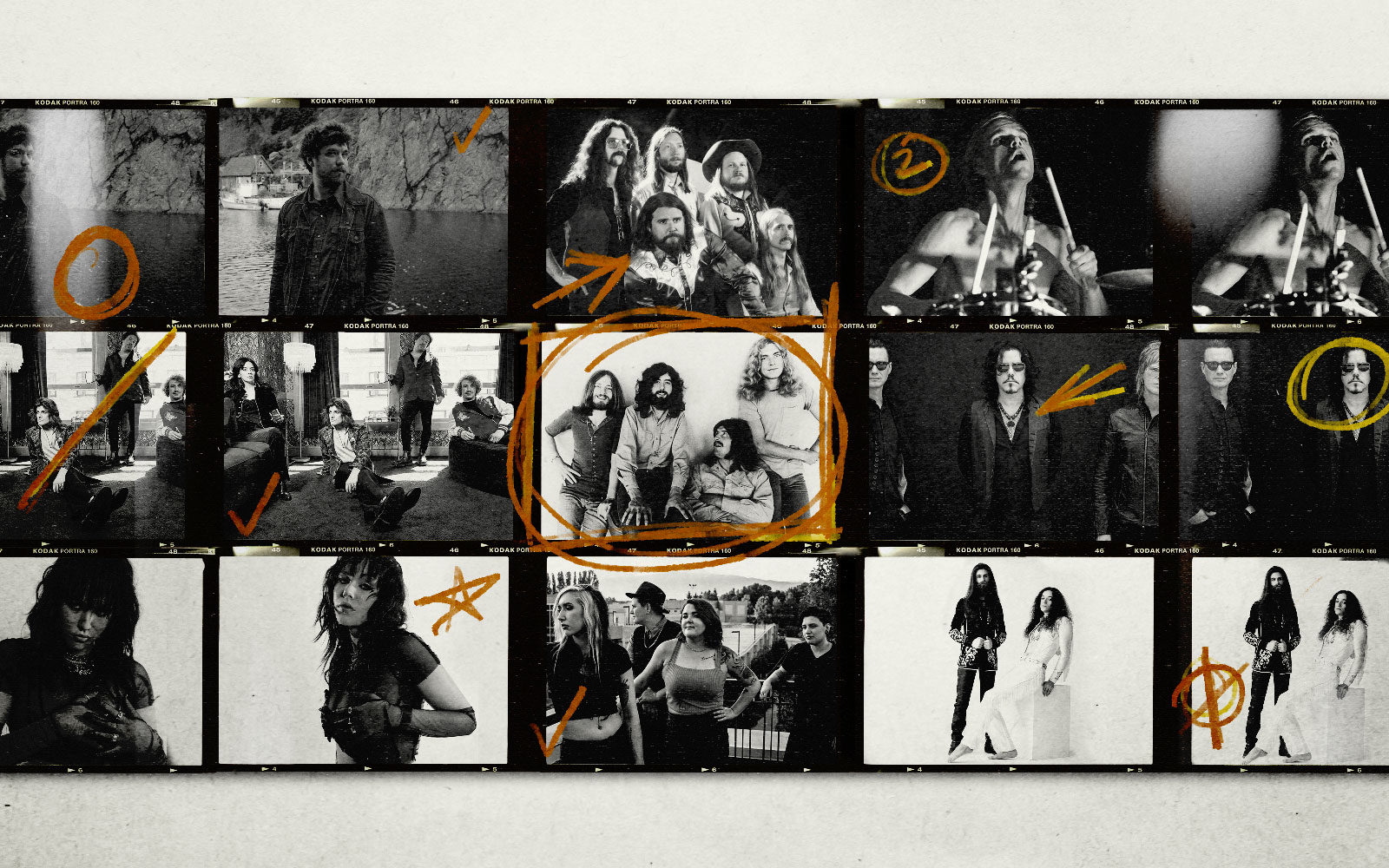
Led Zeppelin: IV Score and 50 Years Ago
Celebrating the golden anniversary of a rock and roll monument.
by RANGE
Photo illustration by Erik Grice
On November 8, 1971, Led Zeppelin released their fourth studio album, Led Zeppelin IV. Dropping the needle on this iconic manifestation of rock and roll fury, an army of echoing guitars surge forward before the riff to “Black Dog” goes off in every direction. Prior to this moment, nothing like that in the rock and roll world had been heard before. Written by John Paul Jones, not Jimmy Page, the melodic wonder-riff had a blues flavour but was sophisticated, spirited, and sexy all at the same time. Above all, it was brave and exciting. Backed by John Bonham’s fierce downbeat that plunged the song into a deep hypnotic groove, this is the moment when Zeppelin quit paying homage to their heroes and became game-changing greats themselves.
For decades LZ IV has largely been synonymous with “Stairway To Heaven,” the well-crafted medieval folk tune that launches off into the stratosphere and beyond. Truly a musical opus for its time and many a prom night since. But there are several notable staircases on the record. Tucked away at the end of Side B, “When The Levee Breaks” shines with Bonham’s mighty Ludwig kit. The drum sound produced was so riveting, it defined the true essence of “kick it” and has been sampled by hundreds of artists from all walks of life — pop, punk, metal, electronic, hip-hop, soul, funk. “Misty Mountain Hop” and “Four Sticks” were also buried on the second side of IV. The tracks are loaded with repetitive, wrap-around riffs and rich, reverberating textures that were laid to tape from inside the walls of the damp confines of Headley Grange, a vacant heritage building in the countryside south of London where the band recorded the album.
Then there’s the perplexing cover art. Page, now directing its design, chose the old man with a bundle of sticks on his back, the ugly concrete hi-rise in the background. Much has been said of that photo concerning tarot cards, the passing of time, environmental peril, and the horrors of the modern world, all woven into a complex narrative – or at least one you could savour. And without a single word printed on the sleeve, that much more was left to the imagination. What Page had most in mind, was to strip it all down and let the music speak for itself.
RANGE summoned eight musicians to write a personal essay, one for each of LZ IV’s eight songs. Some went one step further, sharing renditions of the same track through their own unique lens. This is a track-by-track celebration of one of the most classic rock and roll albums ever released, as told exclusively through the lens of the musicians who were shaped by it.
• Introduction by Brad Simm









